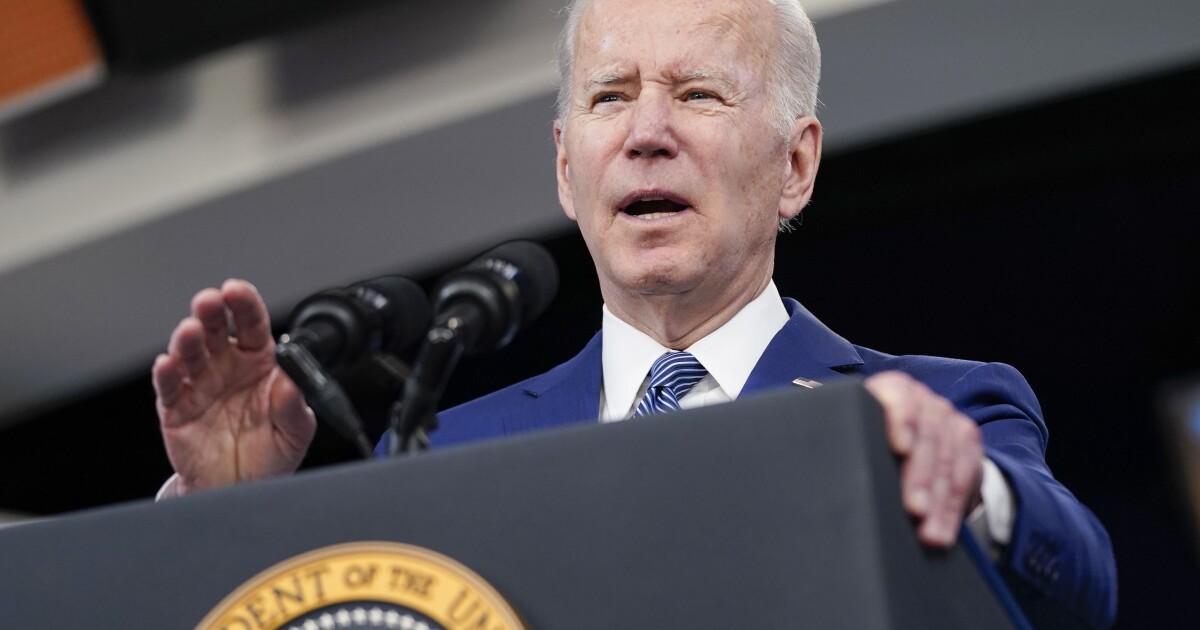A new ideological debate in the United States about inflation

President Joe Biden offers a solution to curb the seemingly illogical inflation plaguing the US economy: restore jobs in factories that have left the country.
This goes against the dominant thesis for decades, according to which companies have moved their operations offshore to cut costs, and exploit cheap labor. This policy caused the US to lose 6.8 million jobs, but it also lowered consumer prices and lowered inflationary pressures, in favor of economic growth.
This account has satisfied many businessmen and politicians. But now that the US has experienced its highest inflation in 40 years, Biden sees globalization as generating an increase in prices. This is because proponents of offshoring have not taken into account the costs associated with supply chain disruptions that are becoming more frequent. The latest disruptions were in response to the COVID-19 pandemic, shortages of basic commodities such as semiconductors, severe storms, fires and now the Russian invasion of Ukraine, driving up oil prices.
Biden says the government has two options for dealing with inflation: it can stop interfering and allow wages and growth to slow, or it can remove the factors that cause inflation in times of emergency and uncertainty.
“We have to choose,” Biden declared on Friday as he announced that Simens USA had created 300 jobs. “Make wages go down and Americans get poorer, or make a better plan to fight inflation by cutting costs not their wages.”
He noted that if more semiconductors were manufactured in the United States for example, the number of cars and other materials produced in the country would increase. This will boost the supply chain and, in theory, lead to lower prices.
However, implementing the plan will take years, and consumer prices scheduled for Thursday are expected to show annual inflation rose about 8% last month, according to financial statistics firm FactSet.
Biden’s problem is that he is proposing long-term solutions to a situation that plagues consumers on a daily basis, according to Douglas Holtz-Eakin, president of the American Labor Forum, a center-right group.
“Building semiconductor manufacturing facilities is something that takes years,” he said. “Inflation is here, it’s a current problem.”
Biden’s proposal has sparked an ideological battle with Republicans, who say the $1.9 trillion coronavirus relief program is excessive and is pumping more money than is necessary into the country’s economy. Republican lawmakers say inflation, which has averaged 2% in recent years, is an exclusive product of Biden’s policies, while the administration says it is a response to structural issues in the global economy.
House Republican Caucus Leader Kevin McCarthy and others said last week that inflation, especially gas prices, is what most worries people ahead of the year-end midterm elections.
“It doesn’t take a letter to tell the State of the Union,” McCarthy said on Twitter, referring to Biden’s latest annual report on the state. “You get it every time you go to the grocery store and gas station.”
Biden’s critics say his plan is an attempt to build political support rather than a proposal based on available information.
“It’s a matter of perspective,” says Scott Linkecum, director of economics and trade at the Cato Institute, who is a liberal. “The Biden administration recognizes that inflation is a major political obstacle and they are looking for ways to get people to see that they have a plan to solve the problem.”
Lincicome argues that inflation is mostly caused by the Fed’s efforts to encourage growth, through Biden’s relief program and the challenges posed by reviving the economy after the pandemic. Taking back the places that left the country will not solve those problems. This idea is based on the idea that supply chain problems are permanent, he said.
“Global supply chains reduce costs and improve efficiency,” said Linkecom. “The notion that bringing back jobs that were lost will reduce costs assumes that the epidemic is ongoing, which is not the reality.”
The Biden administration is only promoting this thesis, saying that supply chain disruptions are becoming more prevalent and affecting prices in ways companies haven’t thought of. The White House says the current structure of the US economy makes it vulnerable to imbalances that drive up prices.
When companies began to move their operations abroad, they did not take into account the potential problems that could arise in remote locations.
“The potential risks and disruptions were not foreseen, and they weren’t thought of in the long-term, five or ten years,” said Samira Fadli, deputy director of the White House National Economic Council. They were only thinking of cutting costs for a year or two.
The government bases its analysis in part on studies by the McKinsey Global Institute. A 2020 report from this institute indicated that companies will experience supply chain disruptions for a month or more every 3.7 years, driving up costs and lowering profits.

“Award-winning zombie scholar. Music practitioner. Food expert. Troublemaker.”







